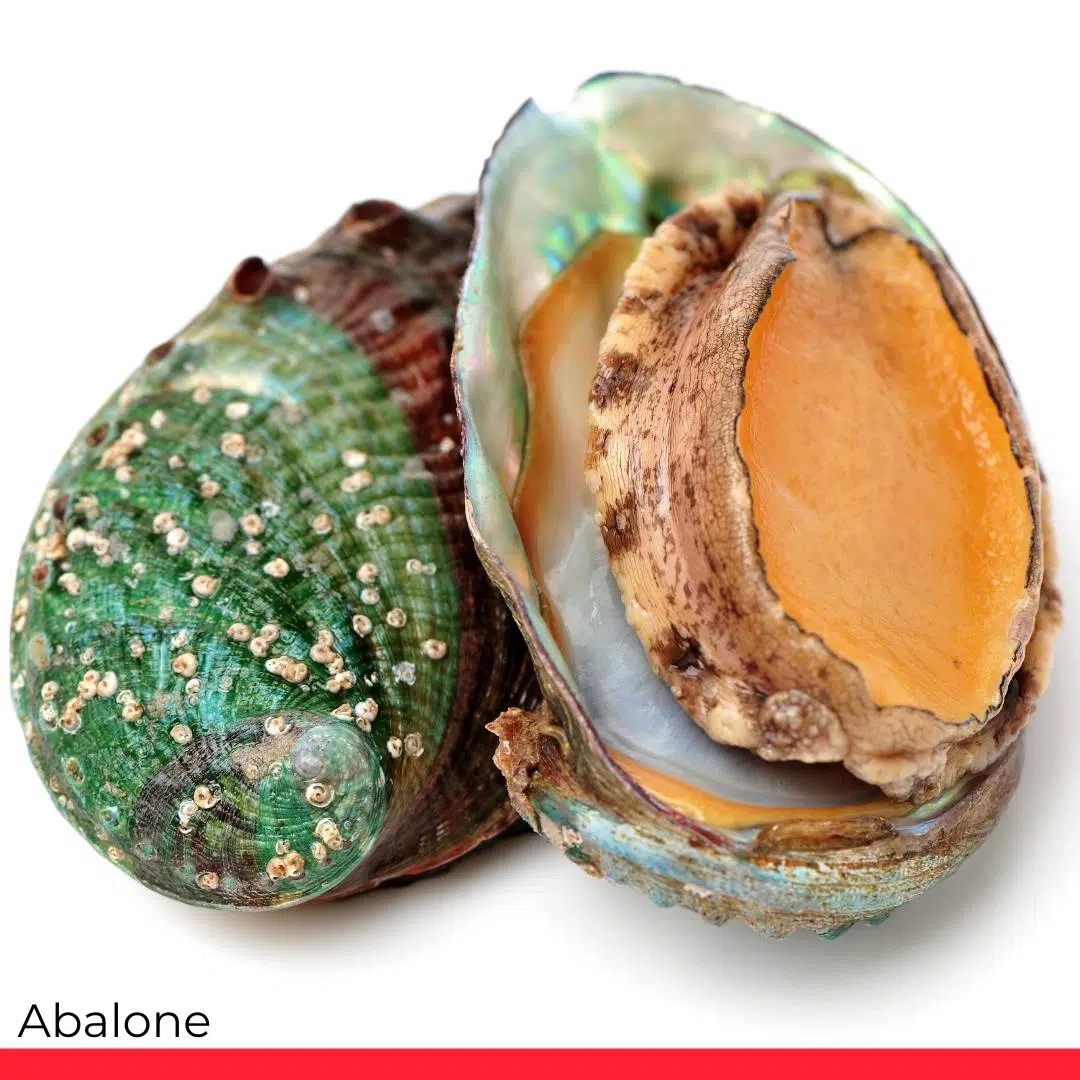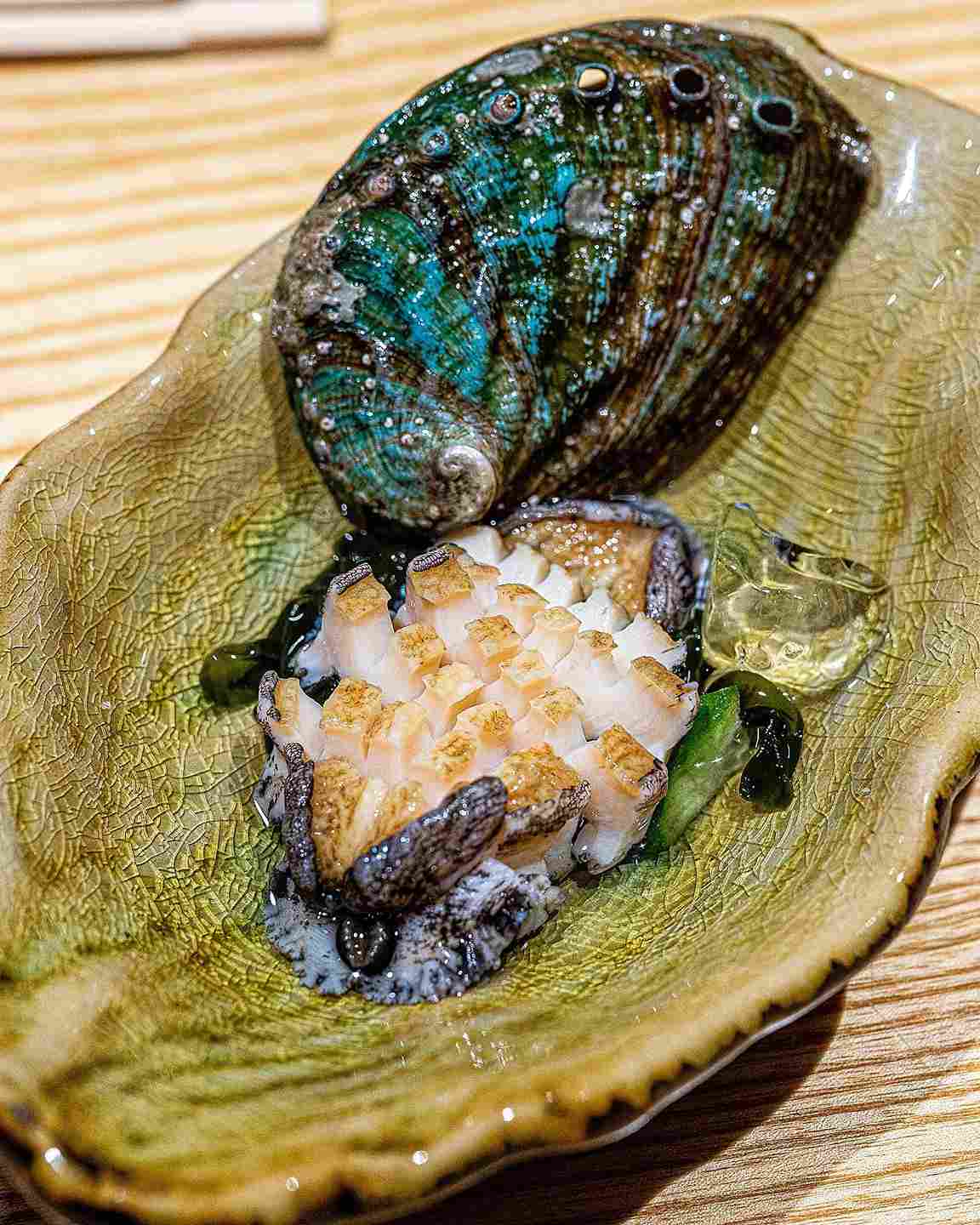All about Abalone (Taste, Price, How to Cook)

What does Abalone Taste Like
Abalone is widely known as being one of the most expensive shellfish in the world. The naturally buttery and salty taste, thanks to the seawater it lives in, is very distinct. Resembling a texture like scallops or squid, the prized shellfish is still sought after by the best chefs around the world.
What is Abalone?

Abalone is a hand-sized sea snail that lives in coastal saltwaters. Unlike other sea snails, it has just one singular shell covering the top and uses a large foot to cling to rocks and eat algae. The shell itself is flat and spiral-shaped, with several small holes around the edges. Inside, the shell is pearl-like in color and pattern and covers the prized meat.
Abalone is such a rare and unique ingredient that is rarely used in day-to-day life. The expensive delicacy can cost up to $50 for a single shell and, in some cases, even more. What makes it so expensive, is its rarity and its unique taste, as well as the technical preparation it takes to cook it.
History of Abalone

Traditionally, abalone is found in the Oceanic, the United States, and the Indo-Pacific region as well as Great Britain and Japan. In Japan and China, farming of abalone began in the later 1950s and 1960s. It grew rapidly in popularity due to its unique texture and taste.
In East and Southeast Asia, as well as Latin America and France, abalone is a delicacy. In China, it is also known as bao yu and is sometimes used in Chinese celebration banquets. Canned abalone is often found throughout China, with people paying a premium to get a taste of this delicious shellfish.
In Japan, fresh abalone is more commonly eaten as opposed to canned. The Japanese have a special fondness for abalone (awabi in Japanese) as people believed it to have been the elixir of life.
Abalone is one of the many organisms that are under threat of extinction. Around the world, the number of wild abalone has also been dramatically decreasing. A number of reasons are said to be a cause; however, over-fishing and sea pollution are the biggest contributors.
In Japan, nationwide catches of abalone have plunged from 6,466 tons in 1970 to roughly 2,000 tons over the last three decades. Whilst demand is still increasing, supply is struggling to keep up. As of late, farmed abalone is becoming increasingly available.
How Abalone is Prepared

Abalone is used throughout the world, especially in fine dining cuisine. There are various different preparations it goes through to enhance its natural butteriness and saltiness.
Raw

Abalone is often eaten raw, in various different cuisines, but most commonly in Japan. The meat is carefully prized away from the shell (which is often used to decorate gardens). The liver, mouth, and other organs are removed. Next, it is washed using a hard brush to remove any dirt or grit. From this point on, there are a few different ways of slicing into sashimi, which varies from chef to chef.
Firstly, the abalone adductor is sliced off. This part is softer than the main flesh of the abalone so it is best enjoyed on its own. Then, the top of the abalone is scored in a crosshatch pattern to make it easier to eat.
The attention to detail in the Japanese style of preparation is mesmerizing. As they slice the abalone into thin cuts, they use a waving movement to make the surface of the abalone jagged, making it easier to pick up with chopsticks. Finally, using the heel of a knife, the flesh is scored again in a cross-hatched pattern. It is commonly served with wasabi, soy sauce, and shiso leaves.
In other countries, there are other techniques to counteract the toughness of the abalone. Sometimes the outer skin is trimmed as it is difficult to tenderize like the rest of the flesh. The abalone is sliced thinly and gently tapped with the back of a spoon. Finally, it is sliced thinly and served with a squeeze of lemon.
Pan-Fried

Pan-frying is another common cooking method that brings out the delicious sweetness and butteriness of the abalone. In western countries, it is often coated in flour, salt, and pepper and simply fried and garnished with lemon. In Japan, it is fried with butter and soy sauce: a classic Japanese flavor combination.
Braised

In Chinese cuisine, abalone is often braised in a flavored stock becoming deliciously sweet and tender. Braising is common in Chinese cookery, often used to impart umami-packed flavors ad spices into various proteins. A mixture of dried shiitake mushrooms and abalone are braised in a chicken stock flavored with oyster sauce, Shaoxing rice wine, ginger, and garlic.
There are so many different ways of eating abalone, with top chefs creating new methods for preparing this prized shellfish. The unique texture and flavor makes abalone one of the most prized shellfish in the world, and with good reason. Although its not an everyday ingredient, it definitely is worth trying out.

